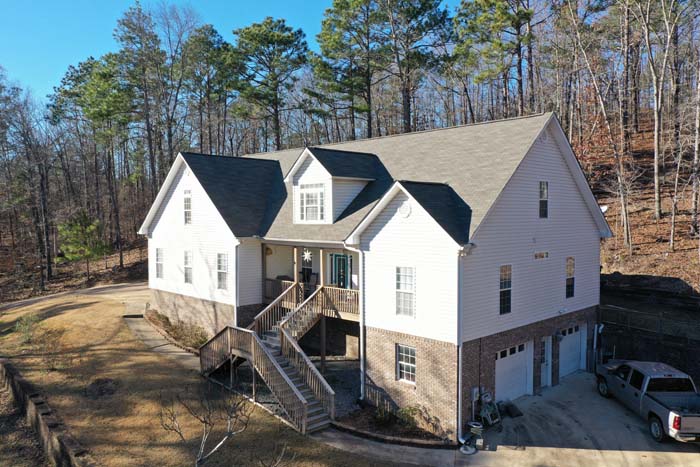Can You Replace Just One Section of Siding? Pros & Cons of Partial Repairs
As homeowners, it’s common to face the need for repairs and maintenance, with the siding being one of the most crucial elements of your home’s exterior. In today’s climate of escalating housing repair costs and increasingly unpredictable weather, understanding the intricacies of siding repair is vital. The question often arises: can you replace just one section of siding, or do you need to overhaul it entirely? Let’s examine the pros and cons of partial repairs by looking at various siding materials, the financial implications of repair methods, and the future outlook of siding technology.
Importance of Siding Types in Partial Replacement Decisions
The type of siding material on your home can significantly influence the decision-making process. Common materials include vinyl, wood, and fiber-cement, each presenting unique benefits and challenges.
Vinyl Siding
Vinyl siding is often favored for its affordability and ease of installation. However, matching the color of new vinyl siding to existing panels can be challenging due to UV fading. While vinyl repairs are generally cost-effective, they can be prone to cracking in extreme weather conditions.
Wood Siding
Wood offers a timeless aesthetic but requires regular maintenance to prevent rot and insect damage. Partial replacements can be easily performed by matching types of wood, though maintaining color uniformity via stains or paints might be necessary.
Fiber-Cement Siding
Fiber-cement is praised for its durability and resistance to elements. While often more expensive, its longevity can justify costs. However, it can be heavier and more complex to install in partial repairs compared to other materials.
Step-by-Step Guide to Partial Siding Replacement
Conducting a partial siding replacement involves several critical steps:
- Assessment: Determine the extent of damage and identify the siding sections that require replacement.
- Tool Compilation: Gather necessary tools, such as hammers, nails, a pry bar, a level, and replacement siding.
- Safety Precautions: Ensure safety gear like gloves and goggles are worn to prevent injury.
- Removal: Carefully remove the damaged siding without impacting adjacent sections.
- Installation: Install new siding, ensuring it matches the pattern and lines up with existing sections.
- Inspection: Thoroughly inspect the completed work for structural integrity and aesthetic alignment.
Homeowner Experiences and Testimonials
Several homeowners have shared insights into the partial siding replacement process. For example, Linda from Florida opted for a partial repair of her vinyl siding after a hurricane, highlighting the quick turnaround and minimal disruption as key benefits. Meanwhile, John from Oregon addressed wood siding rot issues with targeted replacements, emphasizing the importance of ongoing maintenance to avoid future problems.
Financial Implications: Partial vs. Full Replacement Costs
When comparing costs, partial siding replacements are often favored for their lower immediate costs. For instance, replacing a section of vinyl siding might cost around $300-500 depending on the size (source_article), while a full replacement could escalate to several thousand dollars. Detailed scenarios reveal that while partial repairs are initially cheaper, the longevity and resale value advantages of a full replacement can sometimes offer better long-term financial outcomes.
Impact on Home’s Resale Value
Partial repairs can influence a home’s resale value and curb appeal. According to experts, inconsistent siding can detract from a home’s overall appearance, potentially affecting buyer perception. However, a well-executed repair that blends seamlessly with existing siding might adequately maintain the home’s value. Statistics from real estate sources indicate an ROI improvement when siding is maintained, either partially or fully, though full replacements typically offer higher returns.
Forecast: Future of Siding Technology and Eco-Friendly Trends
Future advancements in siding technology are expected to offer more durable and sustainable materials. Industry predictions suggest a shift towards eco-friendly materials that not only protect homes but also reduce environmental impact. Technologies such as self-healing materials and more accurate color matching solutions are anticipated to simplify partial repairs and enhance overall durability. Insights from industry veterans on platforms like Bob Vila (source_article) emphasize the potential of these innovations to change the landscape of both partial and complete siding repairs.
As awareness of environmental impact increases, homeowners might lean towards siding options that reflect sustainability certifications, further influencing choices between repair or replacement.
Conclusion
While partial siding replacements offer homeowners numerous benefits in terms of cost and efficiency, they also come with certain challenges, such as ensuring aesthetic consistency and anticipating future repairs. Weighing the pros and cons, along with considering factors like material type, financial implications, and evolving technology, can guide homeowners toward the most suitable decisions for maintaining their homes’ integrity and value.

